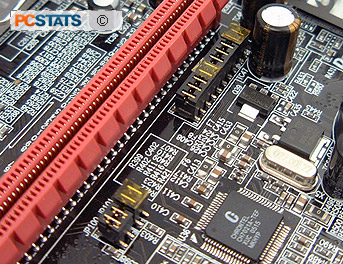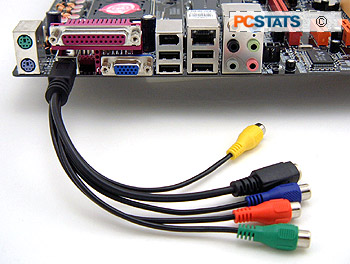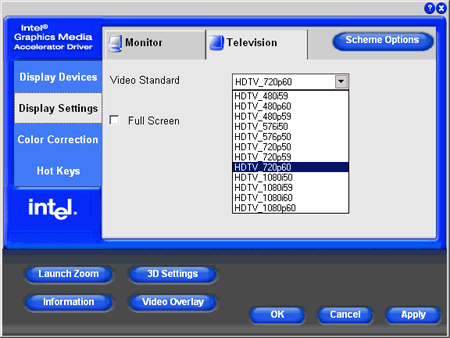 There are a few issues with the Aopen i945Ga-PHS
motherboard that we shouldn't forget to focus on. The most critical of which is
getting a PCI Express x16 videocard working when it is installed onto the board.
Because of the onboard graphics, it is not as straightforward as just
physically installing the card; the user must also move some jumpers around.
There are a few issues with the Aopen i945Ga-PHS
motherboard that we shouldn't forget to focus on. The most critical of which is
getting a PCI Express x16 videocard working when it is installed onto the board.
Because of the onboard graphics, it is not as straightforward as just
physically installing the card; the user must also move some jumpers around.
The requirements are described in the user's manual in the following manner:
"For i945Ga-PHS, the PCI Express x16 Graphics slot can automatically
recognize a PCI Express x16 Graphics or a Multiplex Intel DVO Output depending
on which cards being inserted." In reality, it doesn't
quite work that way.
There are four sets of jumpers that must be adjusted
before the PCI Express x16 videocard can function. Unfortunately, in the board we received at the PCSTATS labs for testing, the appropriate instructions are not mentioned in the manual or quick installation guide.
If the jumpers are
not set properly, the standalone PCI-E x16 videocard will not function. PCSTATS contacted AOpen representatives about this and heard back that this information should have been in the manual. We expect the company to address this oversight and indicate which jumper need to be adjusted in the manual in the near future.
HDTV output and Overclocking
The Intel i945G chipset does not support TV or component output as we've already mentioned a
couple times. AOpen has added this feature by incorporating the PCI Express x1 Chrontel CH7021-TEF chipset onto
the board. AOpen includes the necessary break-out cable to connect the computer
to a television.

Setting up the component output to work is quick and painless, mainly because those features are integrated directly into the Intel videocard driver utility. To get the ball rolling the user needs to hook up the Y, Pb, Pr cables beforehand, launch the utility next, and wait for it to automatically detect the HD television.
Setting up the S-Video and composite output was a bit more tricky... The Chrontel chipset had difficulties detecting Composite outputs and after half an hour of frustration, we could only get the display to work with the composite output to a Samsung 193MP multifunction LCD display once.

The Intel utility is otherwise easy to use, and pretty self-explanitory, and in the above image you can see all the different HDTV modes the Chrontel chipset supports.
To test the HD accelerating capabilities of Chrontel
chipset, the Discoverers (IMAX) HD video was played back through Windows Media Player 10. System resources were monitored via Task Manager. The HD
video available in both 720P and 1080P formats from Microsoft's WMV HD Content Showcase website.

While running the 720P version of the Discoverers
HD video, CPU usage was split relatively evenly between both cores of the Intel Pentium D 840 processor. Usage jumped between 25% and 35%, and there was no noticeable lag in the playback of the short movie.

On the other hand, when running the Discoverers 1080P HD video some rather more interesting results
were generated. For starters, CPU usage was substantially higher on the first
core, but overall load still kept to about the same 25%-to-35%
figures. Based on that information, it appears as though the Chrontel HD
content acceleration might be better than nVIDIA's PureVideo HD
implementation.
The Component output video quality was excellent, and picture quality on was almost as fine on the television as on a computer monitor. Video playback quality was also excellent, and the details are definitely better than what one would see with a DVD movie. The Chrontel chipset must support high definition content acceleration, as CPU usage numbers were better than the competition!
